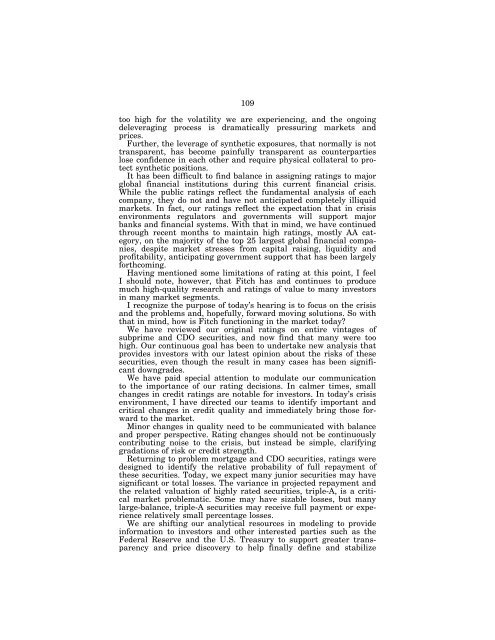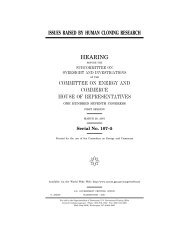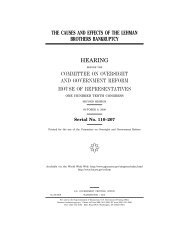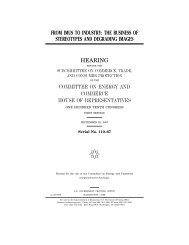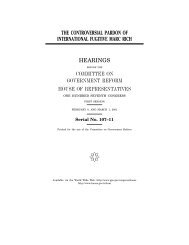CREDIT RATING AGENCIES AND THE FINANCIAL CRISIS ...
CREDIT RATING AGENCIES AND THE FINANCIAL CRISIS ...
CREDIT RATING AGENCIES AND THE FINANCIAL CRISIS ...
- No tags were found...
You also want an ePaper? Increase the reach of your titles
YUMPU automatically turns print PDFs into web optimized ePapers that Google loves.
109too high for the volatility we are experiencing, and the ongoingdeleveraging process is dramatically pressuring markets andprices.Further, the leverage of synthetic exposures, that normally is nottransparent, has become painfully transparent as counterpartieslose confidence in each other and require physical collateral to protectsynthetic positions.It has been difficult to find balance in assigning ratings to majorglobal financial institutions during this current financial crisis.While the public ratings reflect the fundamental analysis of eachcompany, they do not and have not anticipated completely illiquidmarkets. In fact, our ratings reflect the expectation that in crisisenvironments regulators and governments will support majorbanks and financial systems. With that in mind, we have continuedthrough recent months to maintain high ratings, mostly AA category,on the majority of the top 25 largest global financial companies,despite market stresses from capital raising, liquidity andprofitability, anticipating government support that has been largelyforthcoming.Having mentioned some limitations of rating at this point, I feelI should note, however, that Fitch has and continues to producemuch high-quality research and ratings of value to many investorsin many market segments.I recognize the purpose of today’s hearing is to focus on the crisisand the problems and, hopefully, forward moving solutions. So withthat in mind, how is Fitch functioning in the market today?We have reviewed our original ratings on entire vintages ofsubprime and CDO securities, and now find that many were toohigh. Our continuous goal has been to undertake new analysis thatprovides investors with our latest opinion about the risks of thesesecurities, even though the result in many cases has been significantdowngrades.We have paid special attention to modulate our communicationto the importance of our rating decisions. In calmer times, smallchanges in credit ratings are notable for investors. In today’s crisisenvironment, I have directed our teams to identify important andcritical changes in credit quality and immediately bring those forwardto the market.Minor changes in quality need to be communicated with balanceand proper perspective. Rating changes should not be continuouslycontributing noise to the crisis, but instead be simple, clarifyinggradations of risk or credit strength.Returning to problem mortgage and CDO securities, ratings weredesigned to identify the relative probability of full repayment ofthese securities. Today, we expect many junior securities may havesignificant or total losses. The variance in projected repayment andthe related valuation of highly rated securities, triple-A, is a criticalmarket problematic. Some may have sizable losses, but manylarge-balance, triple-A securities may receive full payment or experiencerelatively small percentage losses.We are shifting our analytical resources in modeling to provideinformation to investors and other interested parties such as theFederal Reserve and the U.S. Treasury to support greater transparencyand price discovery to help finally define and stabilizeVerDate 11-MAY-2000 12:35 Aug 24, 2009 Jkt 000000 PO 00000 Frm 00113 Fmt 6633 Sfmt 6633 U:\DOCS\51103.TXT KATIE PsN: KATIE


